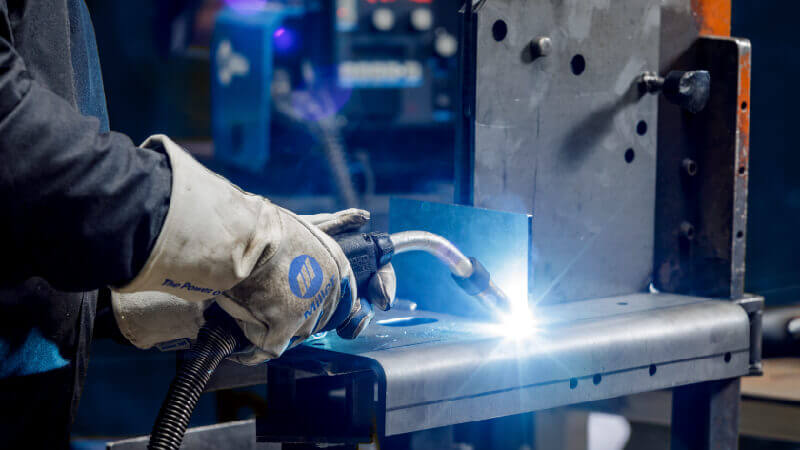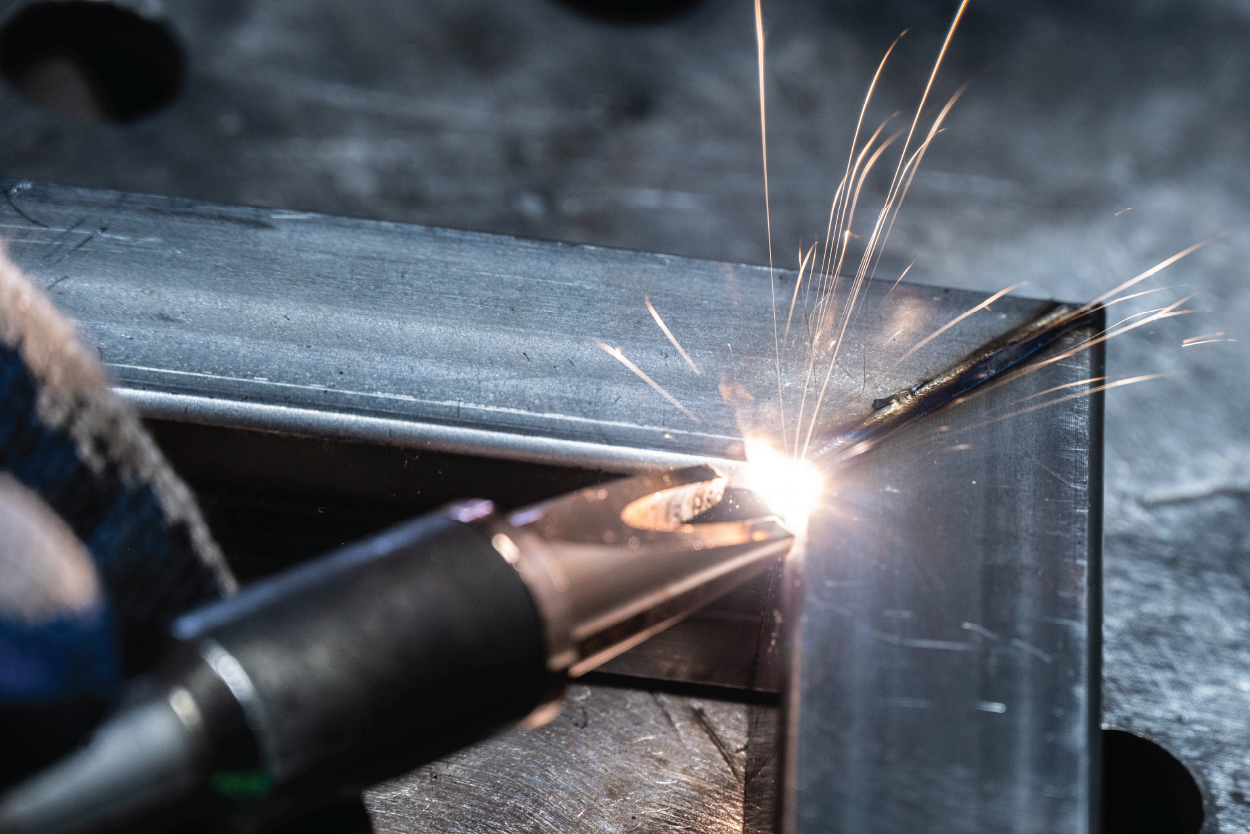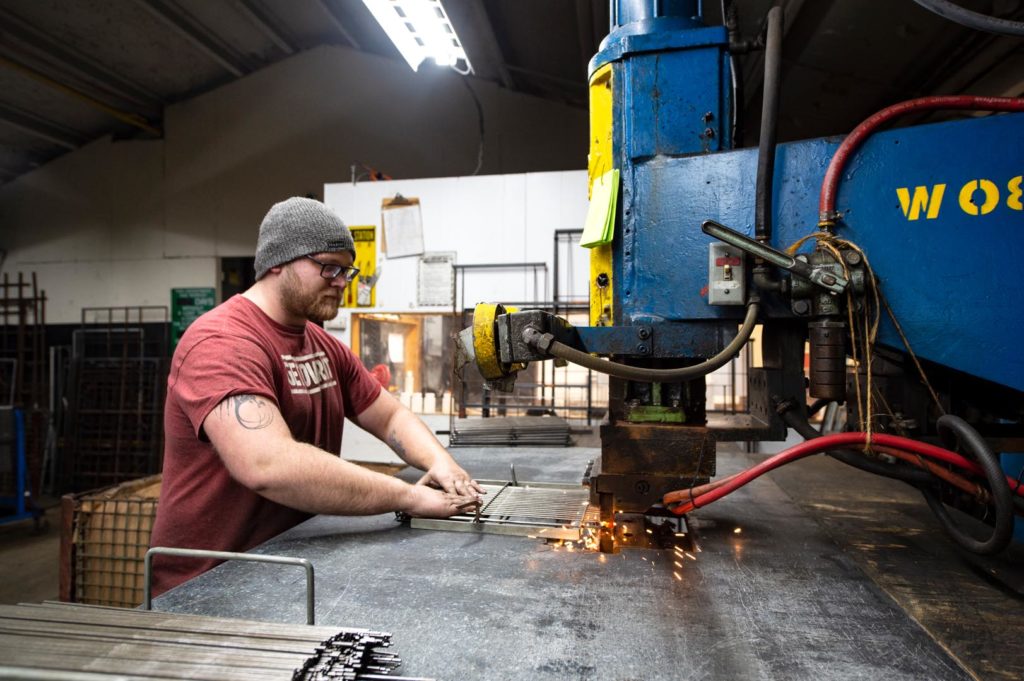Usual Welding Fixing Issues and How to Address Them Successfully
Welding repair work usually encounter a series of problems that can endanger the integrity of the final product. Usual issues include inadequate penetration, porosity, and misalignment, to name a few. Each defect provides unique challenges that need details techniques for resolution. Comprehending these concerns is important for welders intending to boost their results and skills. This discussion will certainly check out these typical welding fixing issues and effective techniques to address them.
Inadequate Penetration
Insufficient infiltration occurs when the weld steel fails to fully fuse with the base material, resulting in weak joints and possible structural failures. This problem commonly stems from inadequate warm input, inaccurate electrode angle, or improper welding speed. Welders may encounter inadequate infiltration because of a miscalculation of the essential specifications for a certain product density or type. Furthermore, contamination on the base product's surface area can hinder efficient bonding, worsening the problem. To attend to inadequate penetration, welders must guarantee suitable setups on their devices and preserve a clean job surface area. Routine assessment of welds is recommended to determine any type of shortages early, enabling prompt improvements and the prevention of compromised architectural integrity in bonded settings up.
Porosity
Porosity is an usual problem in bonded joints that manifests as small gas bubbles caught within the weld steel. This flaw can compromise the honesty of the weld, leading to decreased stamina and prospective failure under anxiety. Belgrade. Porosity normally develops from contamination, dampness, or incorrect welding strategies, which allow gases to run away into the molten weld swimming pool. To attend to porosity, welders should guarantee proper surface prep work, maintain a tidy workplace, and utilize ideal welding specifications. Additionally, picking the ideal filler material and securing gas can reduce gas entrapment. Normal inspection and screening of welds can assist recognize porosity early, guaranteeing prompt restorative activities are taken, therefore maintaining the high quality and integrity of the bonded structure
Misalignment
Imbalance in welding can develop from various factors, consisting of inappropriate setup and thermal development. Recognizing the source is crucial for efficient resolution. A number of modification strategies are available to straighten elements and guarantee architectural stability.
Causes of Imbalance
Welding misalignment usually stems from a range of underlying concerns that can endanger architectural integrity. One main cause is incorrect fit-up of elements before welding, which can lead to gaps and uneven surface areas. Variations in thermal growth during the welding process can additionally cause distortion, specifically if the materials being joined have different coefficients of growth. Additionally, inadequate fixturing and clamping may fail to hold parts securely in area, causing activity during welding. Poorly conserved equipment, consisting of welding devices and tools, may present inconsistencies in the weld bead, additional contributing to misalignment. Operator mistake, stemming from insufficient training or experience, can likewise play a considerable duty in creating misaligned welds.

Adjustment Techniques Offered
Resolving imbalance effectively needs a mix of restorative techniques customized to the details concerns available. One common technique is using fixtures or jigs to hold components in the correct setting during welding, making sure constant positioning. In addition, preheating the products can help in reducing distortion and boost fit-up. For significant imbalance, mechanical realignment strategies, such as making use of hydraulic jacks or clamps, can be employed to correct the position prior to welding. Post-weld warm treatment might additionally be required to eliminate stress and anxieties triggered by misalignment. Cautious inspection and change during the arrangement phase can stop imbalance problems from coming to be considerable troubles, promoting a smoother welding procedure and improving overall architectural honesty.
Distortion
Distortion is a typical obstacle in welding that can develop from different elements, consisting of unequal cooling and heating. Understanding the reasons for distortion is essential for carrying out reliable avoidance methods. Resolving this concern not just improves architectural stability however likewise improves the total high quality of the weld.
Root causes of Distortion
When based on the extreme warmth of welding, products frequently go through modifications that can cause distortion. This sensation mostly arises from thermal development and tightening during the welding procedure. As the weld area warms up, the material increases; upon air conditioning, it acquires, which can produce internal stress and anxieties. In addition, irregular home heating throughout a work surface can aggravate these tensions, leading to bending or flexing. The kind of material also plays a significant role; steels with differing thermal conductivity and coefficients of growth might react in different ways, bring about unforeseeable distortions. Poor joint layout and insufficient fixturing can contribute to imbalance during welding, raising the possibility of distortion. Understanding these causes is important for efficient welding fixing and avoidance methods.
Avoidance Techniques
Effective avoidance methods for distortion throughout welding concentrate on managing heat input and making sure correct joint style. Keeping a consistent heat input helps to lessen thermal development and contraction, which can bring about distortion. Using strategies such as preheating the work surface can likewise decrease the temperature slope, promoting consistent heating. Furthermore, choosing ideal joint layouts, such as T-joints or lap joints, can boost stability and lower anxiety concentrations. Executing correct fixturing to protect the work surfaces in position additionally aids in keeping alignment throughout the welding process. Lastly, staggered welding sequences can distribute heat a lot more equally, stopping local distortion. By using these techniques, welders can greatly decrease the possibility of distortion and enhance the total high quality of their welds.
Cracking
Splitting is a common problem come across in welding repairs, usually resulting from various variables such as inappropriate cooling prices, product choice, or poor joint preparation. The occurrence of cracks can greatly jeopardize the honesty of the weld, bring about possible failings throughout procedure. To resolve this problem, welders should initially analyze the source, making certain that materials are suitable and appropriately picked for the certain application. Furthermore, regulating the air conditioning rate throughout the welding procedure is essential; rapid air conditioning can generate stress and lead to breaking. Appropriate joint design and prep work also contribute to reducing the danger. Carrying out these strategies can enhance weld high quality and resilience, ultimately decreasing the likelihood of fracturing in finished weldments.

Incomplete Fusion
A substantial issue in welding repairs is insufficient blend, which happens when the weld metal does not effectively bond with the base product or previous weld passes - Montana Mobile Welding and Repair Belgrade Fabrication. This flaw can result in weak points in the joint, potentially jeopardizing the stability of the welded structure. Factors contributing to insufficient fusion include insufficient heat input, incorrect welding technique, and contamination of the surfaces being joined. To resolve this issue effectively, welders ought to guarantee correct pre-weld cleansing and surface prep work, as well as change their welding specifications to accomplish appropriate penetration and combination. Normal examination during the welding process can likewise assist recognize insufficient fusion early, allowing for prompt restorative steps to improve the total top quality of the weld
Overheating
While welding repair work can improve structural honesty, overheating offers a substantial obstacle that can cause product degradation. Excessive warmth throughout welding can modify the mechanical buildings of metals, resulting in reduced strength, boosted brittleness, and warping. This sensation is especially crucial in high-stress applications where structural dependability is paramount. Determining overheating can involve visual inspections for staining or distortion, along with keeping track of temperature throughout the welding process. To reduce the risks associated with getting too hot, welders need to utilize ideal methods, such as regulating warmth Montana Mobile Welding and Repair Belgrade input, adjusting traveling rate, and making use of appropriate filler materials. Additionally, carrying out pre- and post-weld warm treatments can assist recover product residential properties and improve the total high quality of the repair work, guaranteeing long-lasting performance and safety and security.
Frequently Asked Questions
What Are the Common Indications of a Welding Issue?

Exactly How Can I Check My Welds for Quality?
To test welds for quality, one can make use of visual examinations, ultrasonic screening, and radiographic approaches. Each technique ensures architectural integrity, recognizes problems, and verifies adherence to specified requirements, inevitably enhancing the integrity of the bonded joints.
What Safety Precautions Should I Take While Welding?
When welding, one ought to focus on safety and security by using ideal individual safety tools, guaranteeing proper air flow, safeguarding flammable materials away, preserving a tidy office, and being aware of surroundings to stop injuries and crashes.
Can I Fix a Weld Without Redoing the Entire Joint?
Repairing a weld without redesigning the entire joint is possible, depending on the damage (Welding). Strategies such as grinding, adding filler product, or using a welding process can efficiently address specific flaws while maintaining the bordering framework
What Tools Are Crucial for Effective Welding Repairs?
Crucial tools for effective welding fixings include a welding machine, wire brush, mill, protective gear, clamps, and filler materials. Each device plays a vital duty in guaranteeing quality and safety during the fixing process. Porosity generally occurs from contamination, dampness, or incorrect welding methods, which permit gases to leave right into the molten weld pool. Badly conserved tools, consisting of welding machines and devices, may present disparities in the weld grain, additional adding to imbalance. When subjected to the extreme heat of welding, products often undergo modifications that can lead to distortion. Fracturing is an usual concern run into in welding repairs, usually resulting from various elements such as inappropriate air conditioning prices, material choice, or poor joint prep work. A significant problem in welding repair services is insufficient fusion, which takes place when the weld steel does not effectively bond with the base product or previous weld passes.
Comments on “Tips for avoiding distortion in Montana Mobile Welding and Repair Welding projects”